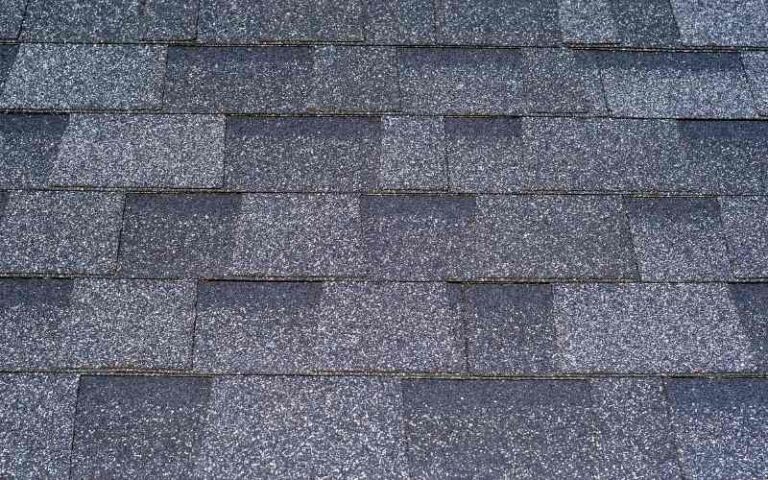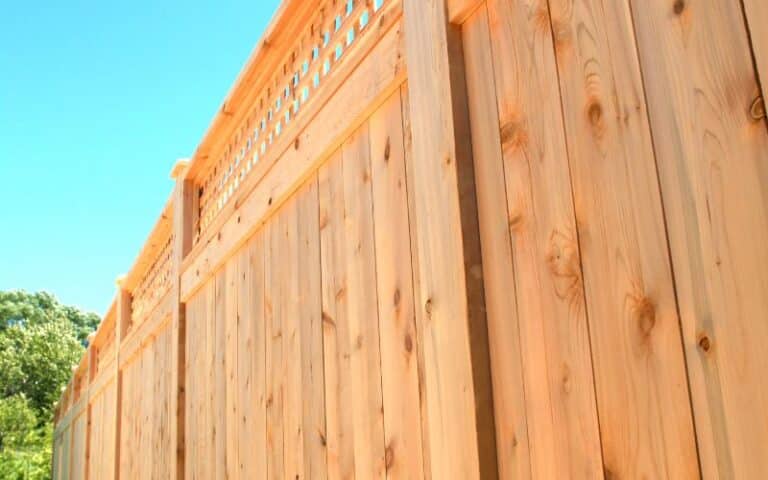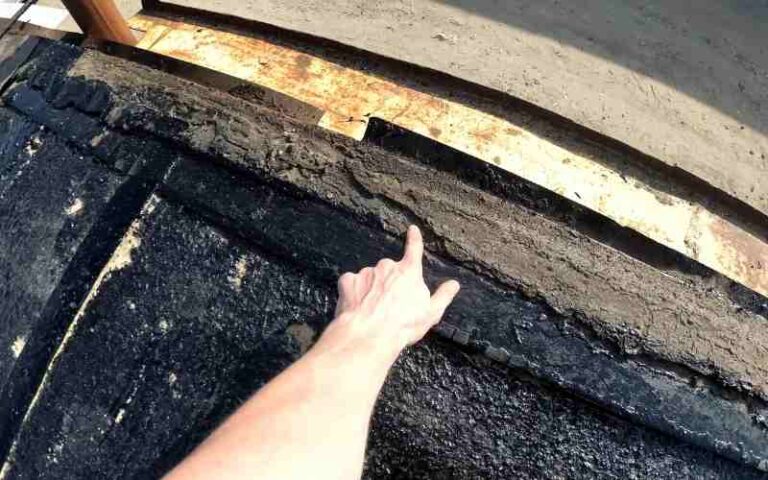Roofing felt underlayment is well known for its effectiveness and efficacy in protecting the household from the elements. In this role, it is almost as reliable as the synthetic roofing underlayments e.g.
The Dupont Tyvek Protec, which are well known for its considerable strength and durability. However, while roofing felt underlayment has its advantages, it still has some downsides.
Yes, roofing felt underlayment leaks. This usually happens when the roofing felt underlayment has been installed for an extended period and exposed to adverse weather conditions. Exposure to unsuitable or unfavorable wind and weather conditions to this grade of roofing felt underlayment highly increases the chance that leaks would occur.
Ready for a Roofing Quiz?
What Happens If Roofing Felt Gets Wet?

The roofing felt underlayment, otherwise referred to as ‘tar paper,’ is usually made from condensed polyester fibers or fiberglass. It is generally compact, and its components are often wool-like.
This meshwork of condensed materials has been proven to contribute highly to its ability to repel water. This property makes the roofing feel very remarkable as a roofing material.
However, it is essential for curious minds to know what exactly goes on within the roofing felt when it eventually gets wet from prolonged and persistent exposure to water.
You must note that roofing felt underlayment is very weak and unreliable in all areas of extreme temperatures.
The durability and reliability of roofing are adversely affected by both extremes of sunlight and extremes of moisture.
The best environment for their use is one in which the elements are in moderate condition.
Furthermore, the possibility of roofing felt getting wet is much higher with the cedar shake type of roof.
This type of roof is designed such that water is first absorbed or soaked up before it is shed off.
Once the water starts accumulating within the roofing felt, the water molecules slowly and surely penetrate the condensed polyester fibers or fiberglass materials.
This might not have had any meaningful impact at the beginning.
However, with time, constant exposure to water leads to a gradual and dangerous build-up of water molecules within the complex network of the condensed polyester fiber and fiberglass.
As a result, the fiberglass becomes saturated with water, and its function in repelling water and ensuring the roofing felt stands as a solid structure starts getting compromised.
However, note that it takes a long before the water enters the fiberglass. This is because fiberglass is always coated with a protective resin layer.
This makes it very difficult, if not impossible, for water molecules to penetrate. With time, cracks and crevices in the fiberglass’ structure, usually at points of attachment, serve as an entryway for water molecules.
Wet roofing felt could lead to any or all of the following:
#1. Change in shape
The entry of water into the roofing felt could eventually cause a change in the shape of the roofing felt. Once this happens, difficulty arises in the alignment of the roofing wet with shingles.
This sort of the change in confirmation calls for an urgent service from roof leak repair experts.
#2. Mold growth
The presence of moisture encourages the growth of mold. Mold infestation on roofs calls for urgent action before the infestation spreads throughout the roof and causes damage to the wood, shingles, and supporting structures.
#3. Leaks and roof holes
Several holes could result from the wetness of the roofing felt. The holes give way to leaks.
Is Roofing Felt 100% Waterproof?
Yes, the roofing felt underlayment is 100% waterproof.
How Long Can Roofing Felt Stay Exposed to Rain?
The roofing felt would retain its integrity for as long as the exposure to rain, and other adverse conditions do not persist for an extended period.
On average, roofing felt can maintain its integrity for as long as one to two weeks of continuous exposure to water and wind. After this period, the chances of having a roof-felt leak would increase exponentially.
By design, a felt flat roof is expected to be very efficient at repelling water, and other forms of moisture that tend to accumulate on the roofing felt underlayment as a result of the continued exposure.
However, this repellent ability can only withstand adverse weather conditions which are not persistent.
That is, if the extremes of sunlight or rain do not persist for long, you can rest assured that the roofing felt would handle the situation excellently.
How Long Does Felt Last on a Roof?
The lifespan of your felt roof is highly dependent on how well-maintained it is. Therefore, to successfully get through adverse weather conditions, you must keep your felt flat roof in proper shape.
On average, felt roofs have been studied and found to last up to ten years under appropriate usage and maintenance conditions.
However, prolonged exposure to any form of moisture and adverse weather conditions considerably shortens the life span of roofing felts.
This, in turn, leads to leaking flat rooms and the ultimate need for flat roof repair.
Just like we have earlier established, roofing felt, though water-resistant and possessing water repellent properties, can only withstand the presence of water or moisture for up to two weeks.
After this time, damage starts to occur, and leaks start happening. Once you begin to notice leaks within your house from the roof, that means you need to repair your felt roof or replace it altogether.
Related: Can Roof Felt Rot?
Now, some tips and tricks have been proven to help improve the lifespan of your roofing felt. Take note of the following:
#1. Avoid Damage to Surface Panel
It is pretty tempting to take a walk on your felt flat roof! This might be just for its fun or to take an aerial view of your environment. However, this is not good for your felt flat roof’s lifespan.
Once any part on the surface of the felt is compromised, the tendency of more severe damage occurring to the whole roof skyrockets.
#2. Inspect your roof after heavy storms and rains
Examine your felt roof after all heavy rainfalls and snowstorms. This would allow you to quickly address any problems that might have occurred while the storm lasted.
With this approach, roof felt leak is not likely to occur in your house.
#3. Conduct all repairs and fixes swiftly
Endeavor to fix all issues you encounter during your routine or emergency check-up. This includes an immediate fixing of those issues you might consider petty, e.g., worn coatings, open seams, and punctures.
#4. Conduct the Correct Replacement
Based on the advice of roofing experts, ensure you can know when to replace and when to repair any part of the roofing felt.
Maintaining a distinction between when either of these actions is needed in your roof maintenance would go a long way in prolonging the integrity of your felt roof.
Engage the service of a roofing professional to conduct a proper check-up of your roof’s condition at least once a year. Unfortunately, your inspection skills as a non-professional are pretty limited.
Conclusion
Roofing felt can leak in certain circumstances. For example, exposure to water and other extreme weather conditions, and excessive sunlight and rain for more than two weeks, eventually cause roof leaks.
To prolong and preserve the lifespan and integrity of felt roofs, ensure routine check-ups and adequate maintenance are conducted.






